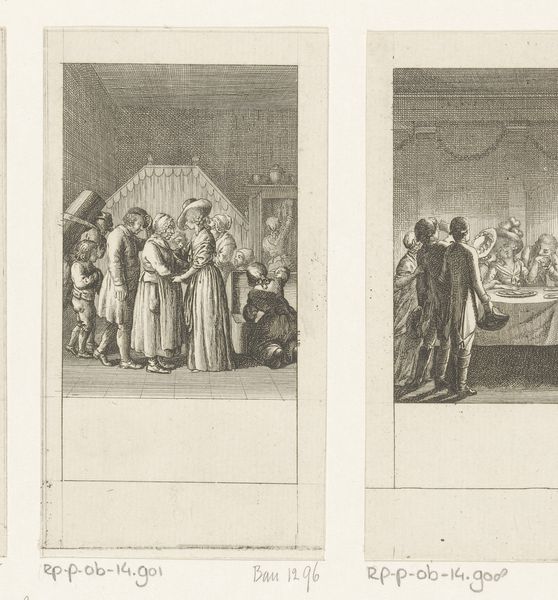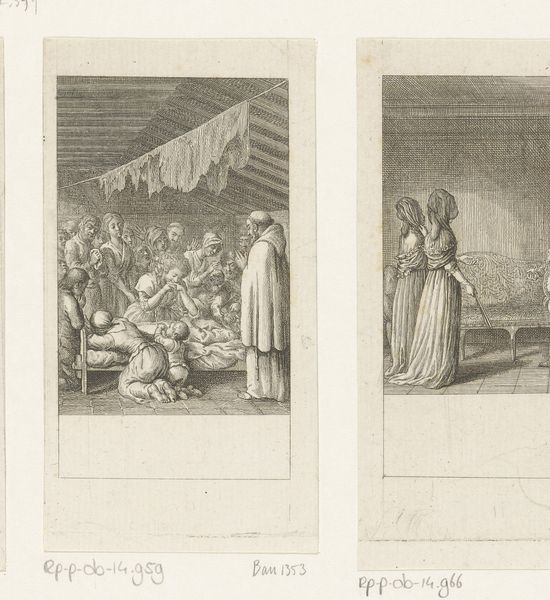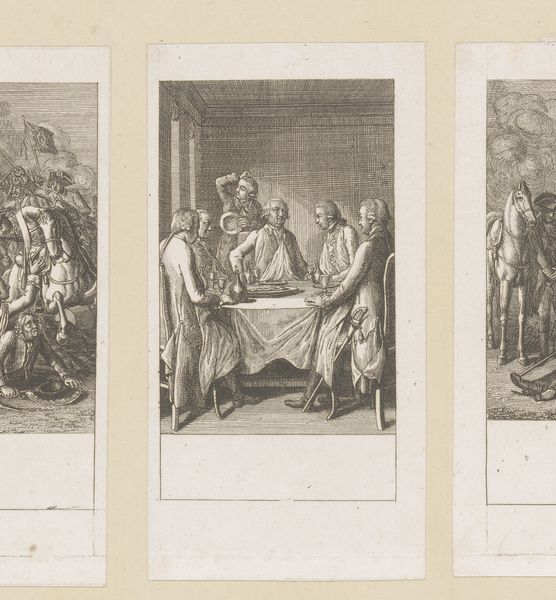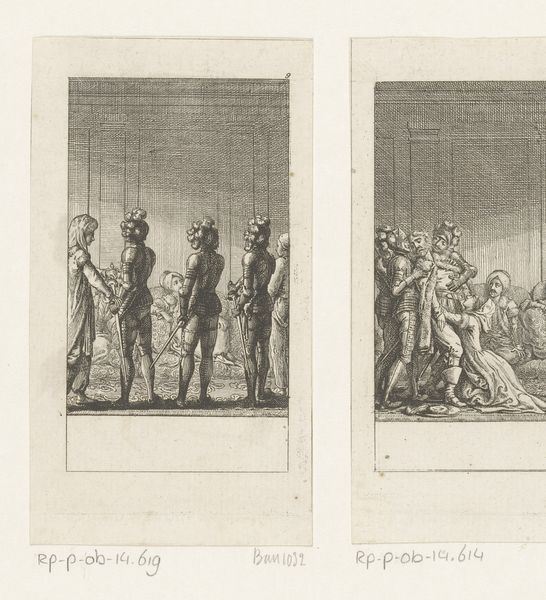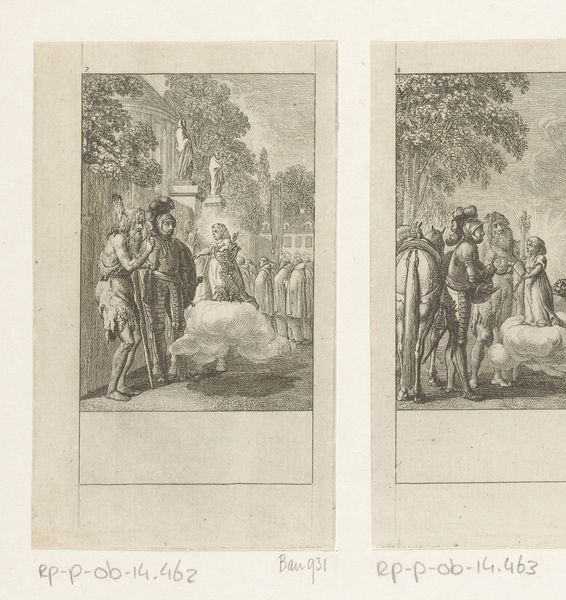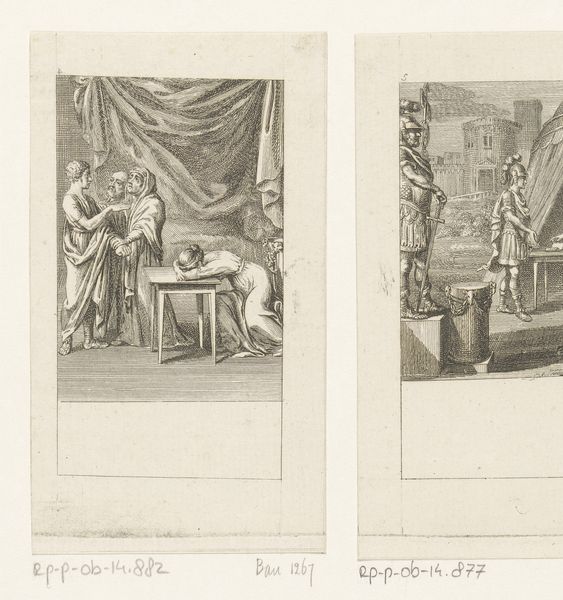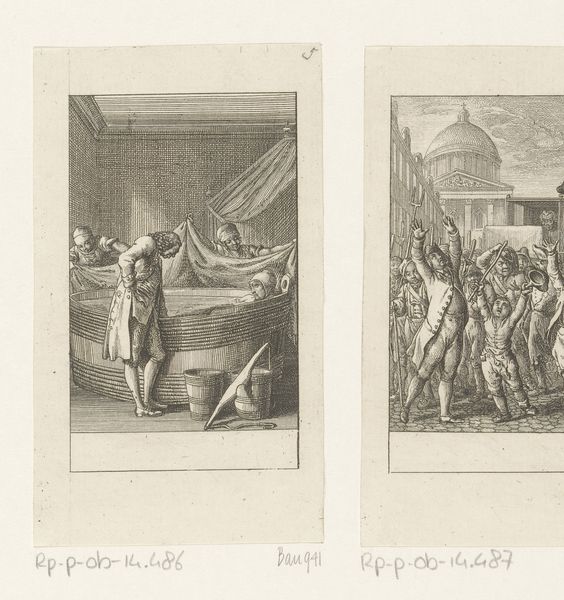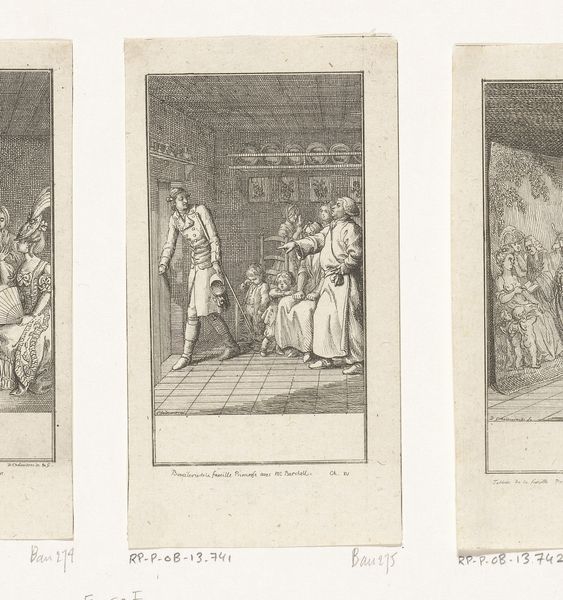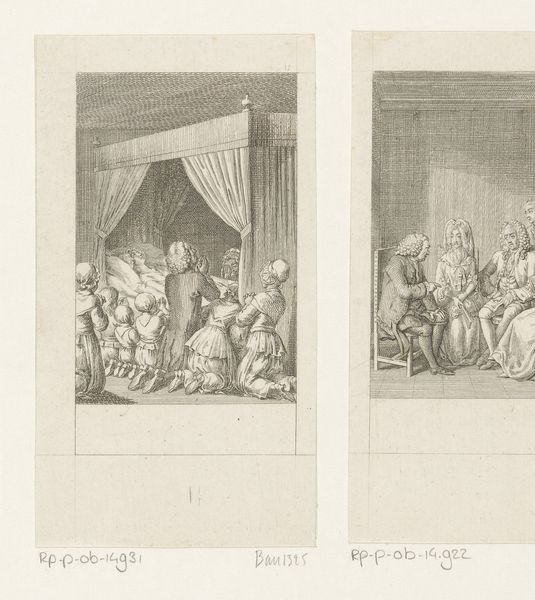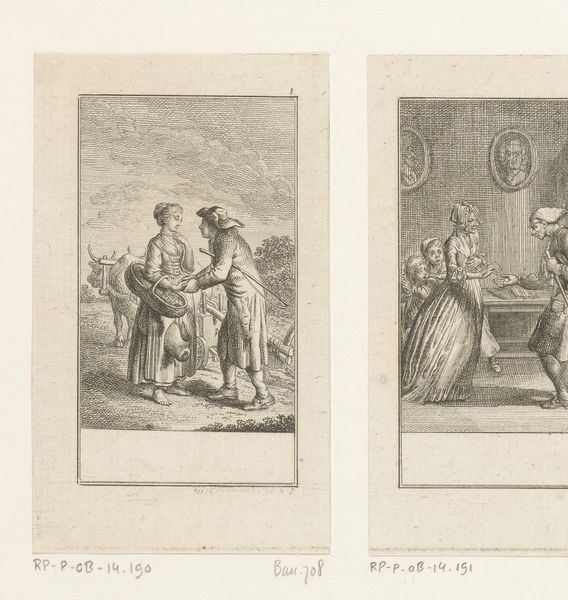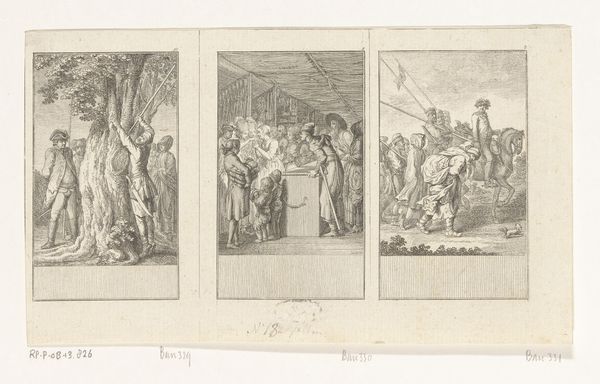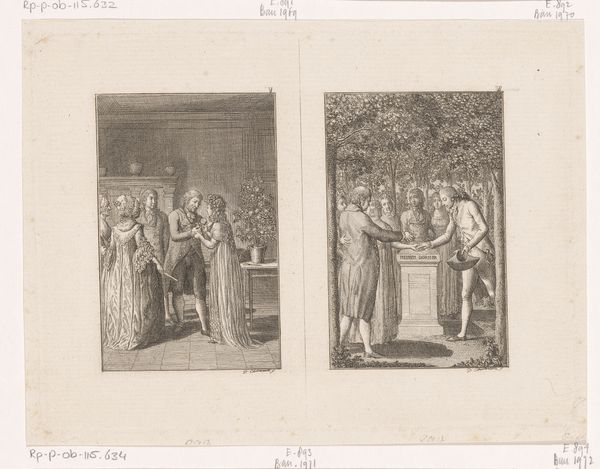
Camille aan tafel bij haar vriendin Nancy en Lord Belton voorafgaand aan het duel 1787
0:00
0:00
print, engraving
#
portrait
#
pencil drawn
#
neoclacissism
# print
#
pencil sketch
#
old engraving style
#
genre-painting
#
history-painting
#
engraving
Dimensions: height 116 mm, width 61 mm
Copyright: Rijks Museum: Open Domain
Curator: Here we have a fascinating double engraving by Daniel Nikolaus Chodowiecki, created in 1787. It’s titled "Camille aan tafel bij haar vriendin Nancy en Lord Belton voorafgaand aan het duel," currently held in the Rijksmuseum collection. Editor: My first impression is a sharp contrast of moods between the two scenes. The one on the left depicts an elegant dinner party, seemingly filled with hushed anticipation. Meanwhile, on the right, there's an immediate feeling of profound grief and loss, rendered with this flurry of figures and heavy, drooping trees. Curator: Precisely. Chodowiecki masterfully captures a pivotal moment preceding and following a duel. The left panel depicts the calm before the storm, laden with socio-political commentary regarding the nobility. The very presence of "Lord Belton" implies privilege and power dynamics prevalent at the time. It reflects how easily disputes could escalate to violence among certain societal circles. Editor: The table setting itself feels symbolic. It's not a celebration. There’s a formality to it, the individuals seemingly caught in poses, representative of how people behaved in certain elevated situations. And the somber dress code across both scenarios suggests a shared feeling: death. The contrast between the warm, candle-lit interiors of the dinner and the oppressive, overgrown garden speaks of social control over grief itself. Curator: Consider, too, that duels were frequently outlawed, adding layers of clandestine actions to the narrative. Chodowiecki presents an arena where honor, or a skewed version of it, dictated behavior, often resulting in tragic consequences as portrayed in the aftermath. His visual storytelling condemns these norms indirectly. Editor: Visually, the recurring motif of draped fabric and stooped figures further amplifies the scene's melancholic undertones. Notice, how grief seems to weight every object, every body shown. And even now, over 200 years after its creation, this work still resonates due to those well-placed images with emotional weight. Curator: Absolutely. It showcases not just artistic skill, but an acute social consciousness. Chodowiecki allows us, through print, to reflect on codes of conduct and to probe their real human impact, and even today, ask, is honour always truly honourable? Editor: It’s certainly given me much to ponder. This juxtaposition forces me to reflect on how social and personal grief interact.
Comments
No comments
Be the first to comment and join the conversation on the ultimate creative platform.
